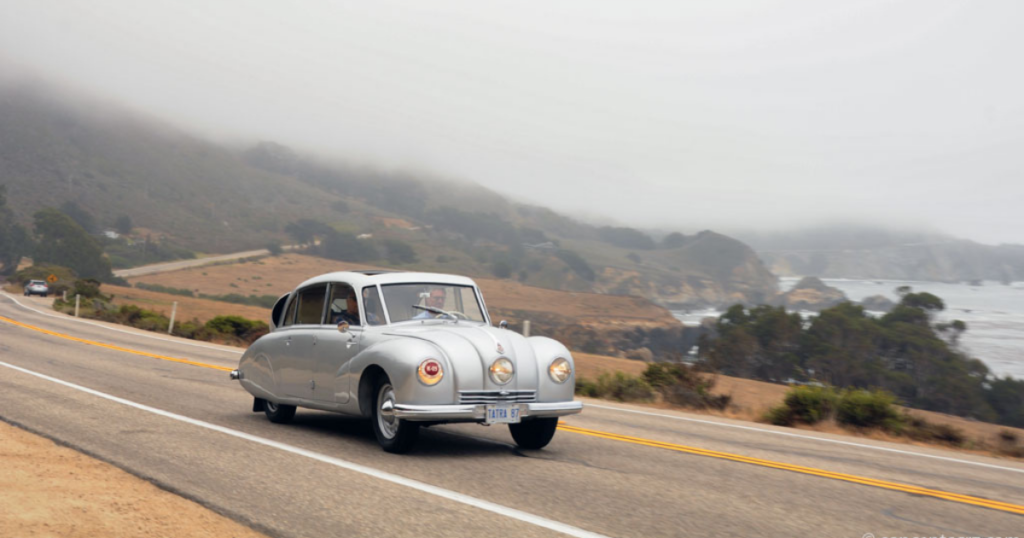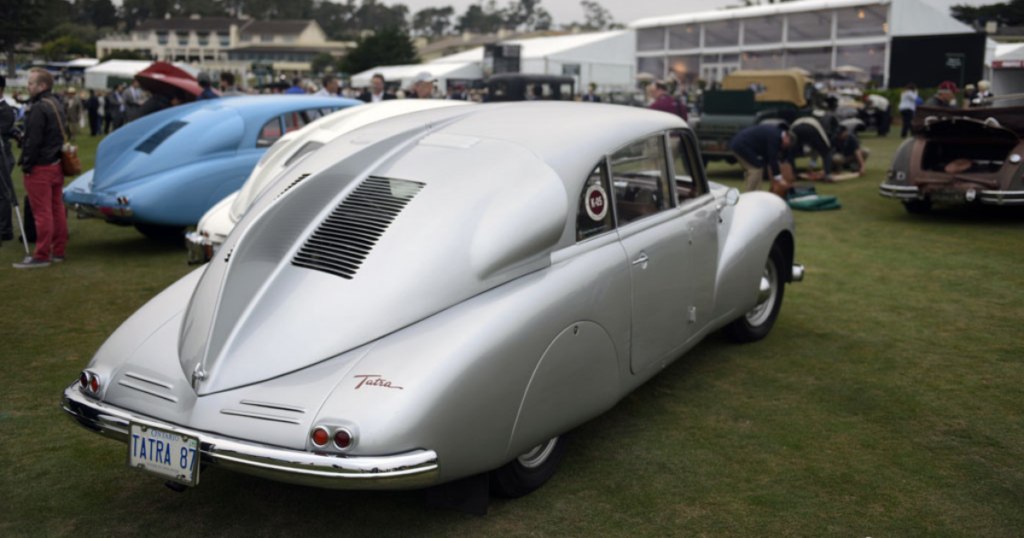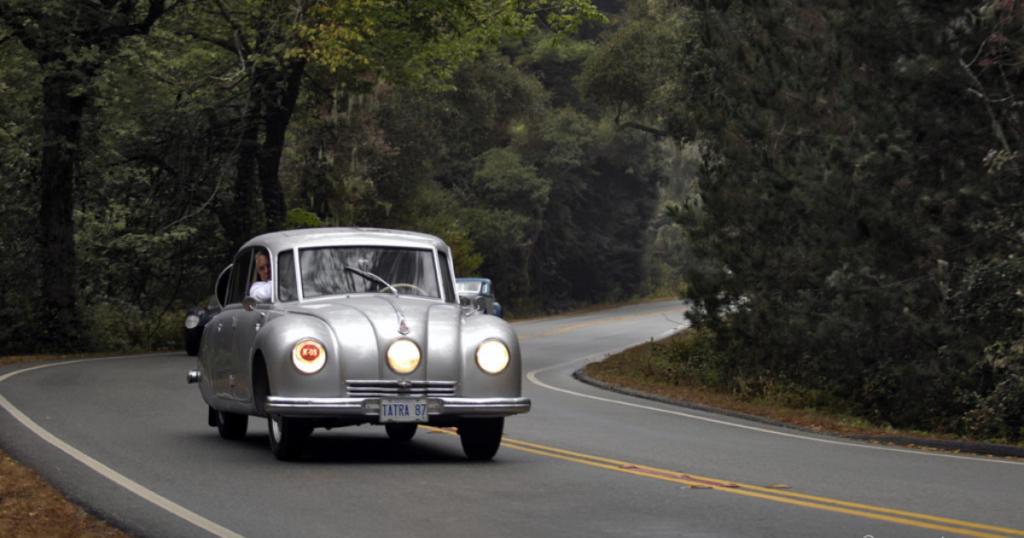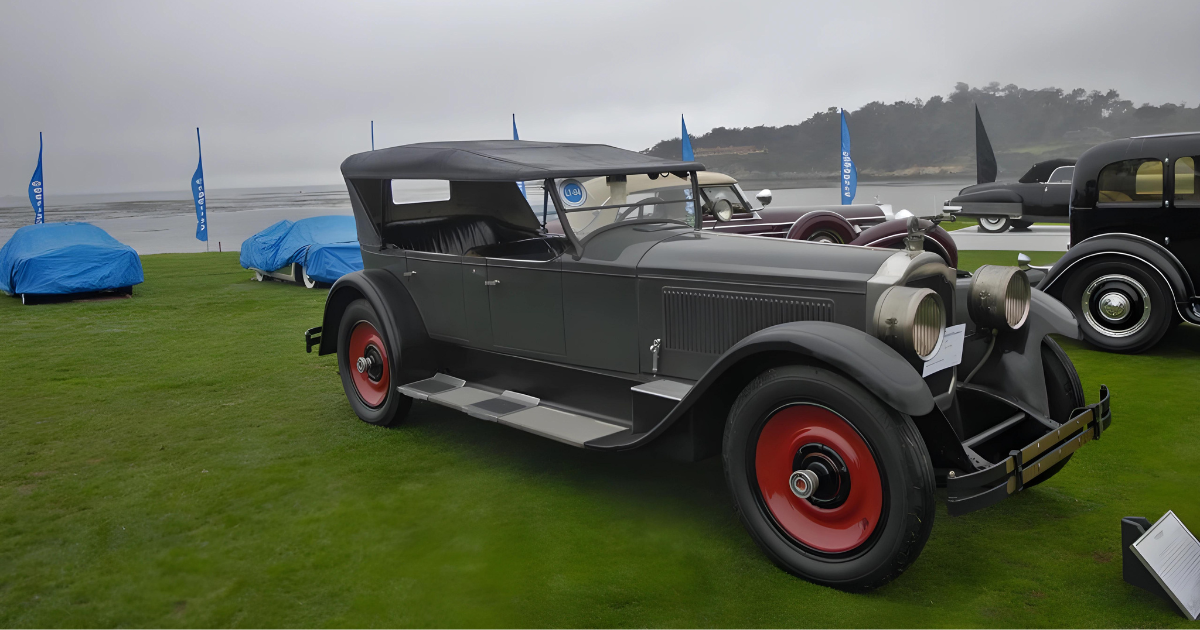
The Tatra T87 stands as a distinctive and innovative automobile born out of the visionary engineering mind of Hans Ledwinka. Designed to address the handling issues of its predecessor, the T77, the T87 not only improved upon its design but also set new standards in automotive technology and performance during its production years from 1936 to 1950.
In the 1930s, Tatra, a Czechoslovakian automaker, was renowned for pushing the boundaries of automotive design. Led by Hans Ledwinka, Tatra introduced the T87 in 1936 as a successor to the T77. The T77, while revolutionary with its aerodynamic shape and rear-engine layout, faced challenges with its handling characteristics. Ledwinka’s solution was to create a shorter and lighter car that retained the rear-engine configuration but with significant improvements.

The Tatra T87 featured a streamlined, teardrop-shaped body that was not only aesthetically pleasing but also highly functional. Its design minimized drag, allowing for enhanced aerodynamics and improved stability at higher speeds. The bodywork, characterized by its smooth lines and integrated fenders, was ahead of its time and influenced subsequent automotive designs.
Powering the T87 was a 3.0-liter air-cooled V8 engine, mounted at the rear of the car. This engine was a marvel of engineering, delivering 85 horsepower and propelling the T87 to a top speed of around 100 mph (160 km/h). The air-cooled design was a trademark of Tatra cars, providing reliability and performance benefits, especially in the context of the T87’s intended use as a grand touring vehicle.

One of the T87’s standout features was its innovative chassis and suspension setup. It employed a backbone chassis, where a central tube ran the length of the car, providing structural rigidity and support for the drivetrain and suspension components. The rear swing axle suspension, coupled with torsion bar springs, contributed to the car’s stable handling characteristics and ensured a comfortable ride even on challenging road surfaces.
Production of the T87 began in 1936 but was interrupted by World War II. During the war years, Tatra focused on producing military vehicles, contributing to the German war effort. Post-war, production of the T87 resumed, and it continued until 1950. By the end of its production run, slightly more than 3,000 units had been sold, solidifying its place in automotive history as a rare and collectible classic car.

The T87’s legacy extends beyond its production numbers. It was favored by affluent buyers, including celebrities and dignitaries, for its combination of distinctive design, advanced engineering, and impressive performance capabilities. Its presence on the road was unmistakable, with its unique silhouette and rear-engine layout making it a symbol of automotive innovation and craftsmanship.
Today, the Tatra T87 is revered among automotive enthusiasts and collectors for its rarity, historical significance, and pioneering engineering. Restored examples command attention at prestigious car shows and auctions, showcasing Hans Ledwinka’s enduring legacy as a visionary automotive engineer who pushed the boundaries of what was possible in automotive design and performance during the mid-20th century.




